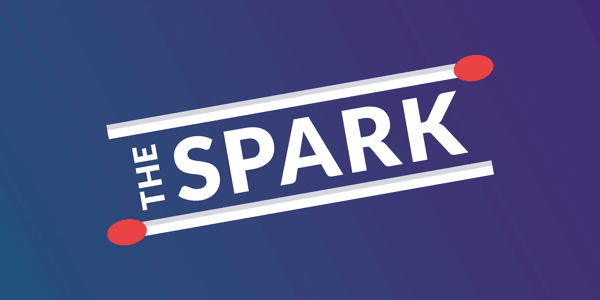Influencer, but Make It BusinessScoot over, lifestyle influencers, B2B is taking over — and these thought leaders don’t have to dance for it. With the rise of the business influencer on LinkedIn, now is the time to establish yourself as a reliable subject matter expert before the platform becomes overly saturated.
Gone are the days when companies and traditional celebrity endorsement guaranteed success. Especially since the pandemic, we’ve watched the marketing landscape completely transform into an influencer-dominated realm, and yes — now B2B is in on the trend too.
With an influencer on your team, brands can get in front of new audiences and put a human face on their business in the form of articles, guest blog posts, or videos posted to platforms like Twitter and LinkedIn. People are more likely to trust a stranger than a brand, so teaming up with a thought leader who has a deep knowledge of your industry can reinforce your brand’s own authority.
As more than 38% of B2B companies are exploring influencer marketing, it’s time to start experimenting with this powerful strategy before it passes you by.
TL;DR: B2B influencers are on the rise, and it might be time to hop on the bandwagon.
⚠️ Can Brands BeReal ⚠️Back in April, we told you about the up-and-coming social media app Be Real. Dubbed the anti-Instagram, this new platform is ditching the filters and highly-edited posts in favor of more authentic, in-the-moment content. Fast forward to today, with more than 20 million global downloads since its launch, we’re wondering: Is there an opportunity for brands to BeReal?
While BeReal is yet to be adopted by brands on a wide scale (Chipotle has experimented with posting QR codes offering coupons on the app), its stripped-down style is clearly influencing marketing. A number of brands have made meme versions of BeReal posts on Twitter and Instagram where they have a more established following. The memes feature BeReal’s hallmark image setup showing two photos, taken from both the front and back cameras at the same time to show what’s happening on each side of the phone.
Even Instagram is leaning into the trend by adding Dual, a feature to capture from both cameras at once. While this may be a fun trend to jump on for your social posts, the bigger takeaway is this: People want authentic content. As you look to appeal to new (and maybe younger) audiences, do what you can to be real.
TL;DR: BeReal continues to dominate in downloads. While it may not be the best platform for brands to shine, we can all learn a lesson on the importance of authenticity.
Cut It Down to SizeBy now, you probably know short-form video reigns supreme. From Reels to TikTok to YouTube Shorts, snack-sized video content is in. But what about all that longer-form footage you worked so hard to create? A new option on YouTube will allow creators to convert segments of long-form videos into minute-long Shorts.
The new feature will include all the standard Shorts editing tools like text, filters, and timeline editor. You can also add brand-new video or include sections from other videos in a converted clip. So, you might take 30 seconds from an existing long-form video about a product launch, and then add another 10 seconds in the form of a new intro, and finish it off with 20 seconds from another existing long-form video that dives further into the product for a new converted Short of 60 seconds.
While short and sweet may be the order of the day, the new tool means you don’t have to leave all your long-form content to collect dust in the cloud. And remember — what goes around comes around. Although short-form is currently king, back in March, TikTok expanded its max video length to 10 minutes, leaving open the possibility for the return of long-form content. Experiment with different video lengths to see what works best for your target audience.
TL;DR: YouTube introduced a new option to convert sections of existing long-form content to minute-long Shorts. Try it out to give your old long-form videos new life.
What Lit Us UpDear User Generated ContentVisions of freshly sharpened pencil bouquets dancing in your head? Back-to-school season is officially upon us, which means marketers are out to sell you everything from folders to crayons to calculators. In its new creative campaign, “Dear LL. Bean”, the retailer captures the nostalgia — and stress — of this particular time of year.
The first spot in the campaign is based on a letter the company received from a child 15 years ago, asking them how to wear out her backpack (it’s the only way her parents will get her a new one).The cheeky ad relies on authentic user-generated content to deliver its core message — L.L. Bean’s products are so durable, they’re practically indestructible.
The campaign brilliantly plays upon nostalgia and invites others to recall their own memories with L.L. Bean’s products and share them on social media using the hashtag #DearLLBean. A microsite is filled with similar stories about the backpack’s durability, which is bound to be a huge selling point for parents looking to stretch their back-to-school dollar amid inflation and rising prices across the board.
User-generated content is quickly becoming a go-to tactic for marketers, and “Dear L.L. Bean” is a great example of its impact. Not only is user-generated content free, it’s also authentic, easily repurposed, and perhaps most importantly, it resonates the most with consumers.
When developing content, ask yourself: Am I marketing to my audience, or marketing with them? User-generated content is one avenue to choose the latter option and engage with your target audience in a more meaningful way.
TL;DR: A new L.L. Bean campaign utilizes user-generated content to stand out in the crowded back-to-school marketing season. Consider user-generated content to reach your audience on an organic level. (Was this email forwarded to you? Sign up here.)
|
-1.png?upscale=true&width=346&upscale=true&name=Tier%20One%20logo_color%20(1)-1.png)


